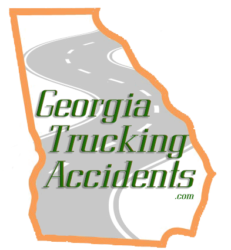18-Wheeler Tractor Trailer Truck Attorneys in Georgia Discuss Predictive Technology In The Trucking Industry to Avoid Georgia Truck Accidents
Predictive technology is the wave of the future for the trucking industry. Recent developments in technology in the trucking industry point to predictive technology as a means to prevent dangerous situations from occurring. Predictive technology can provide fleet managers with a wealth of information that would allow the fleet manager to take preventative measures and resolve a whole host of potential problems. While the trucking companies assimilate new technologies into the industry which might render sharing the road with the large trucks completely safe, and avoid Georgia truck accidents, they have not managed to remove the element of human error from driving a tractor-trailer truck which causes many truck accidents in Georgia.
Predictive technologies were designed to remove “exceptions” from the trucking industry. Exceptions, according to experts, are delays in shipping schedules, unexpected or emergency maintenance, and crashes. The current technology in the trucking industry merely creates reports when a driver encounters a problem. Software installed in the trucks forwards the data to the fleet manager and allows the fleet manager to solve the problem.
Predictive technologies, by contrast, use software to determine when a problem might occur and then determine how best to avoid the problem altogether. Predictive data will allow the fleet manager to know when a truck could breakdown before it does. Additionally, the predictive data could warn fleet managers of a potential problem with the drivers themselves. Conflicts can arise on the roads. Predictive technologies would allow for managers to plan routes to avoid conflict. Most importantly, predictive data could alert the fleet manager to the possibility that a truck could be involved in a Georgia truck accident and then use that information to save a life potentially.
Aside from avoiding accidents, predictive technologies that allow for preventative maintenance could substantially improve highway safety. Mechanical failures such as engine problems, weakening brakes, and failing wheels and tires cause a number of truck accidents annually. Predictive technologies can alert the driver and fleet manager of an issue that needs to be repaired before the component actually breaks.
Having this technology at hand will increase production and safety across the trucking industry. Predictive data could inform the fleet manager that a part will fall into disrepair after driving under certain conditions after a given number of miles. The analysis would occur in real time as the truck rolls along the road. The software can analyze the driving conditions to signal a problem. Then, the fleet manager or driver could take the truck off of the road for repairs. The advantage to using a system in this manner allows the repair center to know in advance of the truck’s arrival what needs to be done and what parts are needed to complete the repairs. This will save time and money. Most importantly it could save lives.
Predictive technologies allow technicians to streamline repairs. Technicians will know in advance which trouble codes present the greatest risk for failure. Technicians can then focus their efforts on fixing problems associated with the codes instead of working their way through a series of codes to reach the problem. The process helps the vehicle get back on the road quickly and efficiently.
In the end, the Georgia motorists riding alongside the heavy trucks benefit from predictive technologies because of the increased safety those systems offer. Drivers who use predictive technologies could anticipate problems and work them into the schedule instead of speeding, while fatigued, or pushing a failing vehicle to the limit just to make a deadline because an “exception” prevented the trucker from hauling its freight.
The Internet of Things (IoT) Technology and the Georgia Trucking Industry
The Internet of Things (IoT) is technology that connects trucks, cars, trains, and planes to each other and to various monitoring systems and databases. Trucking companies can use this technology to monitor their drivers’ behaviors. Most importantly, trucking companies can use this information to analyze the manner in which their employee is operating including speed, amount of force the truck has created, acceleration and deceleration rates, and other operating behaviors. Trucking companies can use this information in various ways, all of which should lead to safer roads in Georgia and greater productivity for trucking companies.
The IoT can send messages to the trucking company about their driver. Many trucking companies use video systems to record their driver while operating. That video can be sent back to the company for risk assessment and develop a profile of their driver. The trucking companies also equip their vehicles with outward facing cameras as well. The video feeds work in conjunction with the sensors placed around the truck and pick up behaviors not otherwise observable from the sensors. The video feeds can help examine how a driver is operating under the current weather conditions, traffic conditions, or assist the trucking company to understand that their driver is unnecessarily creating risks on the roads.
SmartDrive Technology Scores Driving Behaviors
One of most advanced driver monitoring system is used by the United States Postal Service. The Postal Service never monitored its drivers before a service called “SmartDrive” entered the market. SmartDrive uses algorithms to score driving behaviors. The SmartDrive program analyzes the observations it makes of risky behavior and then predicts whether the driver’s history demonstrates a likelihood that he or she will get into an accident. The algorithms calculate relative danger based on the miles driven and the hours spent on the road. Additionally, SmartDrive provides instant feedback to the drivers and their companies that allow them to determine what driving skills upon which the operator needs to improve.
Trucking industry experts worry that as some risky behaviors fade out of practice, others will emerge to replace them. In an attempt to rectify that situation, one company developed predictive technology that captures risky behavior in which the driver engages. For example, the video system could catch the driver sneaking a peak at a cellphone. The program then scores the behavior when combined with other risky behavior, such as following too closely to the vehicle in front. The software then looks for correlative risks to predict whether the driver could be in danger of crashing the truck. An example of a correlative behavior is that a driver who does not wear a seatbelt is almost three and a half times more likely to get into an accident than a belted driver. The software and algorithms determined that risk-taking behavior begets additional risky behavior.
The software company reviewed a lot of data, over 50 million miles driven, to reach their conclusions of predictive behavior. The behavioral theory is known as Heinrich’ Pyramid. Employing Heinrich’s Pyramid, the data analysis revealed that for every 300 acts of risky behavior, there are 29 near misses or minor incidents and one fatality. When risky behavior is combined with other careless practices, the road becomes a dangerous place. Behaviors, like holding a cellphone or eating in the cab plus not looking far enough ahead, create dangerous scenarios for truck drivers and other Georgia motorists on the road.
Sources:


